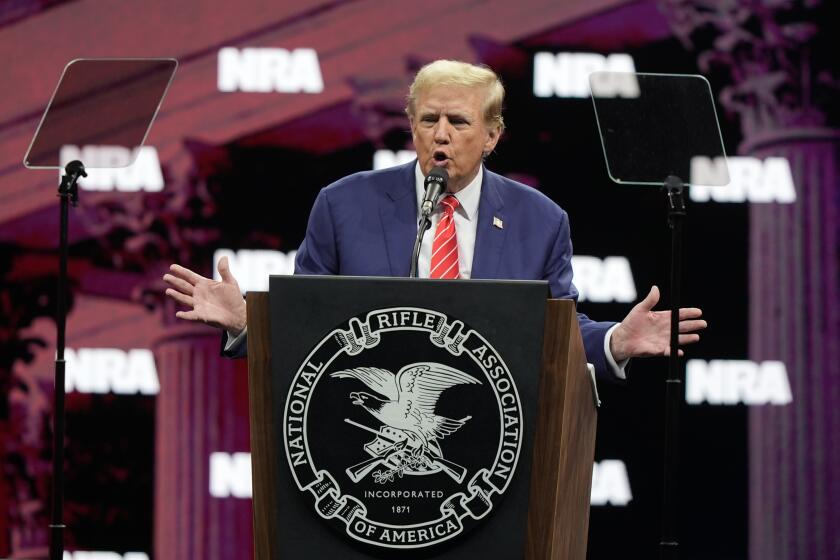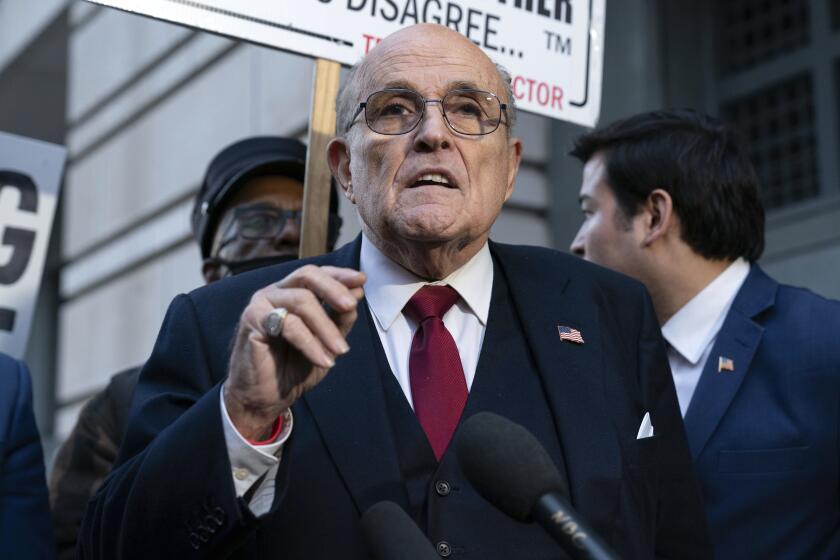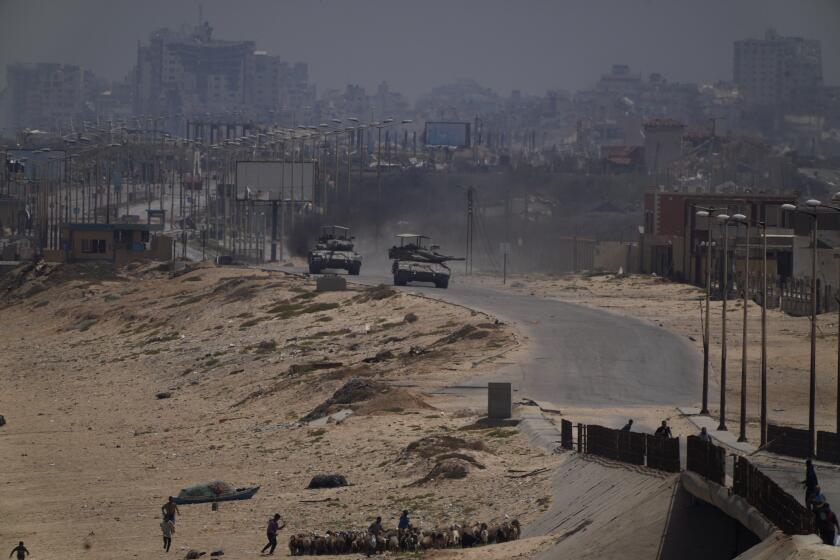Tibetan scholar, symbol of independence struggle
Thubten Jigme Norbu, the eldest brother of the Dalai Lama and a tenacious symbol of the Tibetan struggle for independence, died Friday in Bloomington, Ind., his home in exile for four decades.
He was 86 by Western standards but 87 according to Tibetan tradition, which considers a person to be a year old at birth. A major Buddhist figure in his own right -- he was believed to be the 23rd reincarnation of a famous high lama -- Norbu had been in declining health after a series of strokes. He died of natural causes, said his son, Jigme.
Norbu taught Tibetan studies for more than 20 years at Indiana University at Bloomington. Amid cornfields on the outskirts of town he created a Tibetan cultural center that has drawn thousands of visitors, including the Dalai Lama. The two brothers disagreed on the status of Tibet. The Dalai Lama favors making Tibet an autonomous state, similar to Hong Kong, while Norbu insisted on independence.
He was a co-founder of the International Tibet Independence Movement, which has sponsored more than a dozen walks across the U.S. and abroad to draw attention to Tibet’s suffering under Chinese rule.
Norbu “has been unwavering in his perspective that unless Tibetans regain rule of Tibet completely that there is no way to preserve their culture and religion. He didn’t shift in that position his entire life,” said Larry Gerstein, president of the International Tibet Independence Movement and a professor of psychology at Ball State University in Muncie, Ind.
The oldest son in a farming family of six children, Norbu was born in northeast Tibet on Aug. 16, 1922. At 4 he was identified as the reincarnate of a revered monk, Tagtser. At 8 he left home to enter the Kumbum Monastery near the Chinese border, where he rose at 4 a.m. every day to memorize 2,000 pages of Buddhist scripture.
He was 15 when high lamas declared that his then 2-year-old brother was the 14th Dalai Lama, the spiritual and political leader of Tibet. After his brother’s elevation, he moved from Kumbum to Lhasa, the Tibetan capital, to join his family.
At 27, he returned to Kumbum as abbot of the monastery, which was one of Tibet’s largest, with more than 4,000 monks. That year, 1949, coincided with the rise of the Chinese communists, who regarded Norbu as a prime target. Chinese soldiers invaded eastern Tibet, where Kumbum was, and turned the province into what Dalai Lama biographer Pico Iyer called “the largest gulag in the world.” As Iyer reported, Mao Tse-tung’s soldiers imprisoned 1 in 10 Tibetans and caused the deaths of 1 in 5 -- more than 1 million people -- through starvation, torture and execution.
The Chinese authorities placed Norbu under house arrest and demanded that he travel to Lhasa to denounce the Dalai Lama and kill him if he refused to step down. In return, the Communist government said it would make Norbu a governor general.
Norbu pretended to cooperate and arrived in Lhasa a few days before his brother’s enthronement. As the Dalai Lama wrote decades later, “As soon as I set eyes on him, I knew that he had suffered greatly. He was in a terrible state, extremely tense and anxious.”
He listened in shock as Norbu related the Chinese demands. Norbu then urged his brother to seek foreign support for Tibet and to fight back with military force. Although the Buddha forbids killing, Norbu argued that violence would be justified under the circumstances. He renounced his monastic vows and declared his intent to go abroad as an emissary for their besieged country.
The Dalai Lama could not change Norbu’s mind. “Underneath his calm and jovial exterior,” he wrote, “there lies a tough and unyielding core.”
Disregarding Norbu’s pleas that he leave Tibet, the Dalai Lama remained in the country until 1959. Norbu escaped on horseback through the Himalayas in 1950 and eventually joined a CIA project to train Tibetan Khampa tribesmen as guerrillas. The operation was ultimately unsuccessful.
In 1957, President Eisenhower granted Norbu political asylum. Three years later, he married the sister of a high lama and lived for a brief time in Seattle before accepting a job as curator of Tibetan artifacts at the Museum of Natural History in New York. He became a U.S. citizen during this period.
In addition to his brother, son Jigme and wife, Kunyang Norbu, he is survived by his sons Lhundrup and Kunga; a sister, Jetsun Pema; brothers Gyalo Thondup and Ngari Rinpoche; and three grandchildren.
In 1965 Norbu was invited to Indiana University, where he established a Tibetan studies program. In 1979 he founded what is now called the Tibetan Mongolian Buddhist Cultural Center on 90 acres of donated land.
Norbu returned to Tibet only once, in 1980, at the invitation of the Chinese government. He found the Chinese presence stifling and said he regretted the visit. “Tibet doesn’t exist,” he told an interviewer later. He built a two-story Tibetan-style residence in Bloomington that housed a Tibetan culture library, meditation room and guest rooms. He raised a temple and a 35-foot-tall memorial to the Tibetans who died under Chinese rule. The memorial contains Tibetan Buddhist writings and other sacred relics.
He regarded the center as the outpost of a disappearing culture. “If Tibetans don’t work hard at preserving their culture and religion,” he once said, “there won’t be a Tibet. It will be all Chinese. . . . I want everybody to know there was a Tibet.”
Today hundreds of Tibetans from around the world are expected to converge on his wooded sanctuary in Bloomington, where his remains will be cremated. In accordance with Tibetan tradition, his ashes will be distributed among his relatives.
--
More to Read
Start your day right
Sign up for Essential California for news, features and recommendations from the L.A. Times and beyond in your inbox six days a week.
You may occasionally receive promotional content from the Los Angeles Times.







